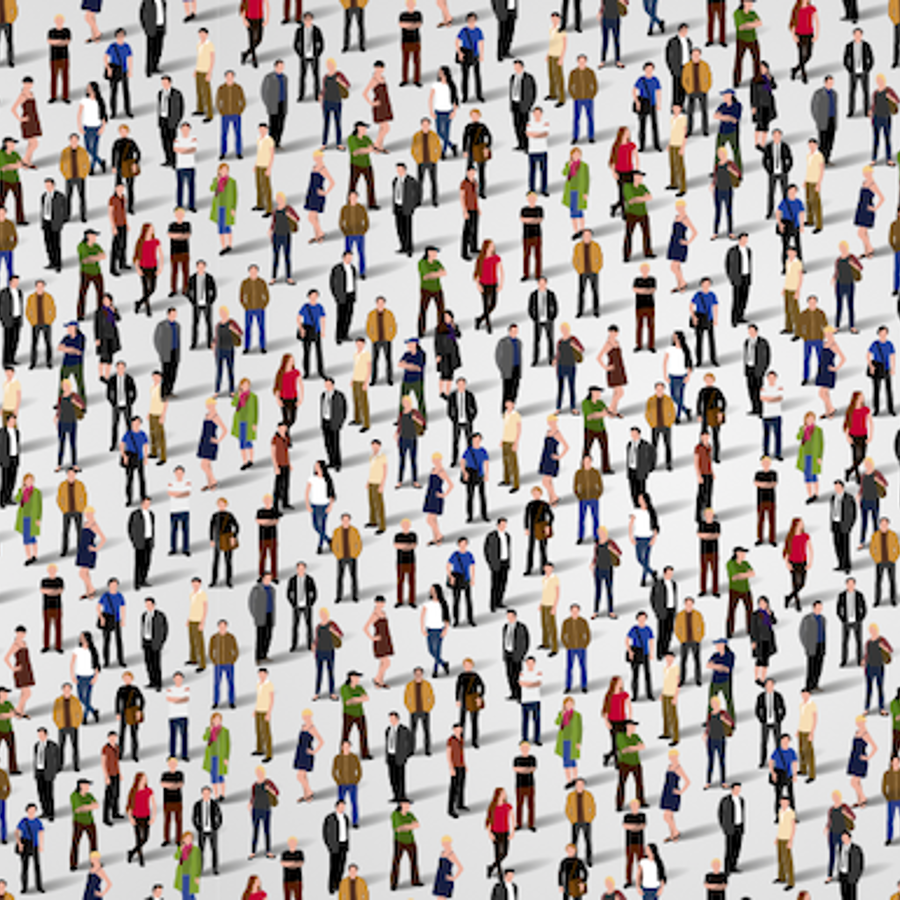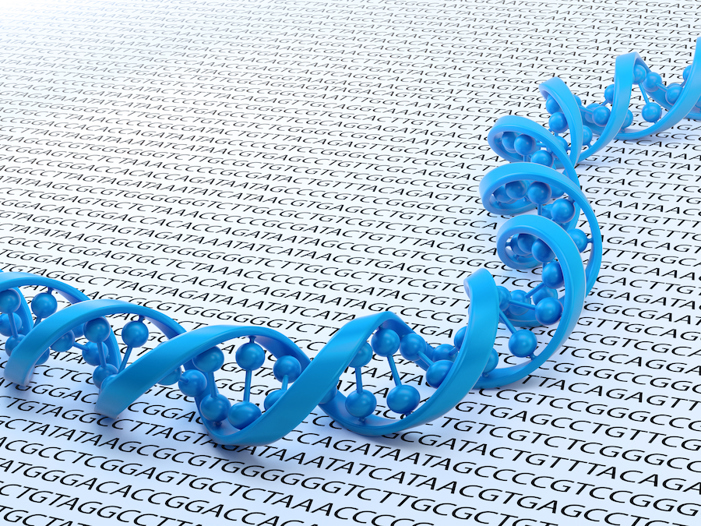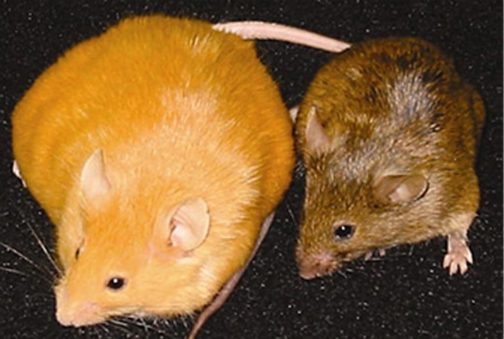
Is there a finite number of ‘possible’ human beings?
November 7, 2005

- Related Topics:
- Quirky questions,
- Epigenetics,
- Noncoding DNA
A graduate student from Texas asks:
"Since there is a finite number of base-sequences in our DNA and also a finite number of genes (combinations of those base sequences), isn’t there a finite number of “possible” human beings? What is that number?"
It might be impossible to say whether the number of “possible” humans is truly infinite, but what we can say is that the number is huge. Possibly not quite infinite but really, really big.
So how do you go about figuring out how many possible variations there are in humans? This isn't as easy as it might seem...
All people basically have the same number of genes (around 25,000), and a similar amount of DNA (over 3 billion base pairs!). Most of our differences aren't caused by having a different number of genes.
Instead, many of our differences come from having different versions of the same genes. To understand how this is possible, let's dig a bit deeper into what a gene is.
DNA and Genes
A gene is an ordered set of the 4 DNA bases, A, G, C, and T. Contained within these letters are the instructions for making a protein.
Proteins are the workhorses of the cell. Pretty much everything that gets done, gets done by a protein. Proteins carry our oxygen, give us brown eyes, and let us walk, breathe, see, and even think.
What all of this means is that a lot of our differences come from having different proteins. As you'll see later, this doesn't explain everything but it explains a lot.
So one way to figure the finite number of humans possible is to look at our 25,000 or so genes and figure out how many differences there can be. So how do we do that?
Genes can be of almost any length and can have many, many combinations of the four bases. This fact puts the number of possible genes pretty close to infinite.
Let's start with a gene that has only 2 bases (even though no such gene exists). If we allow any base at each one of the 2 positions, then we have 4x4 (42) or 16 possible combinations of sequences. Similarly, for a sequence length of 4, the total number of combinations are 4x4x4x4 (44) or 256.
How about a sequence that is 300 bases long (which is still very short for a gene)? How many different combinations of the 4 bases are possible in these 300 bases? The total number of possibilities will be 4300 which to me is something like zillions.

You see how many differences can occur in just one short gene? Now expand that to 25,000 and you see what we're up against!
But how many of these differences really matter? What makes for a different person? Is it just a change in the DNA of a gene?
There are lots of changes in our DNA that have no obvious effect on a person. These "silent" mutations don't show up in any way other than different DNA. And then there are mutations that cause us to die — lethal mutations.
So, out of these (4300)25,000 combinations, we should exclude the silent and lethal mutations to get the true number of different people. Lethal mutations should eliminate lots of these as many, many changes will result in a nonworking gene.
Now that we know how to narrow down our number, can we figure out the number of possible humans? Not really. We don't know all of our genes yet and even if we did, we still wouldn't know which mutations would cause a change nor which would be lethal. Perhaps one day we can figure it out but not yet.
Suffice it to say that the number of possible people is still really, really big. And of course that isn't the whole story.
DNA outside of Genes
We have completely ignored all of the DNA outside of the gene. And this is where most of our DNA is — something like 98.5% of our DNA doesn't code for proteins. And humans have a lot of DNA — over 3 billion base pairs’ worth!
This DNA isn't all "junk" either. Among other things, it is responsible for figuring out when a gene should be turned on and off. What this means is that changes out there can make people different as well.

For example, the ability to drink milk as an adult is the result of a mutation in some of the DNA found outside of genes. All mammals can digest the sugar in milk (lactose) as babies. Most lose that ability as an adult. An exception is adult humans, around 25% of whom can digest milk.
Mammals lose their ability to drink milk because the lactase gene gets shut off. It is the DNA outside of the gene that determines when it is on and when it is off.
Lactose tolerant adults have a mutation in that DNA so that the gene doesn't shut off as an adult. Now I would argue that two people who were identical except for their ability to digest milk as an adult would be two different people.
So DNA outside of genes is important too. And we know even less about that DNA than we do about genes so that predicting which bases are important out there is even more difficult.
Genes and Epigenetics
This still isn't enough. There can be differences that are not due to changes at the A, G, C, and T's level. There can be changes to our DNA that affect how a gene is used without changing the DNA sequence (epigenetic changes).
Sometimes what our mother eats can affect our DNA for life. Scientists at Duke University showed that pregnant mice that received Vitamin B12, folic acid, choline and betaine gave birth to babies with brown coats. Pregnant mice that did not receive these supplements gave birth to mice with yellow coats.1 (The difference wasn't because the mom who had yellow mice was low on these supplements.)

Why did diet affect the hair color of the pups? The extra supplements caused a specific gene, called Agouti, to be turned down. This is what caused the coat color to change — the bases of the Agouti gene didn't change, just how the gene was used by the mouse pups.
Think about this like a light bulb on a dimmer switch. The light bulb is the gene and the dimmer switch is the DNA outside of the gene.
The way a dimmer switch works is that it controls the amount of electricity that gets to the light bulb. A dim and a bright bulb are both the same bulb — it is just how they are used that is different.
Same thing with a gene. The sequences outside act like dimmer switches. The gene is still the same, just how "bright" they are changes.
As we age, experience changes us so that we are different as well. And lots of the changes happen at a DNA level similar to what happened to the yellow mice.
The best way to see these effects is to look at identical twins. Identical twins have the same DNA but are certainly not exactly alike. One of the reasons is that as they age, these twins start using their DNA differently.
In one twin, gene A may be going full blast while in the other, gene A is barely on. The bases are the same, they still have an identical DNA sequence.
The difference is that they are using their genes differently — their "dimmer switches" are set to different levels. Same DNA, different people.
So how many different humans are there? Lots and lots. Our variation has to do with our DNA, the genes we use and how we use them, our experiences, what we eat. Maybe there are an infinite number of people possible!

Author: Dr. Rama Balakrishnan
When this answer was published in 2005, Rama was a Scientific Curator in Mike Cherry’s lab in the Department of Genetics. Rama wrote this answer while participating in the Stanford at The Tech program.
 Skip Navigation
Skip Navigation
